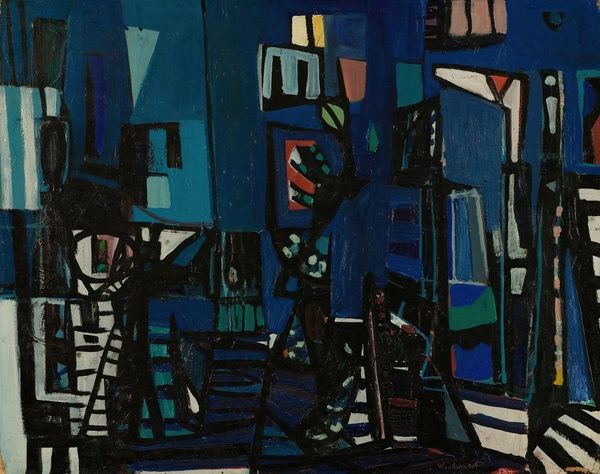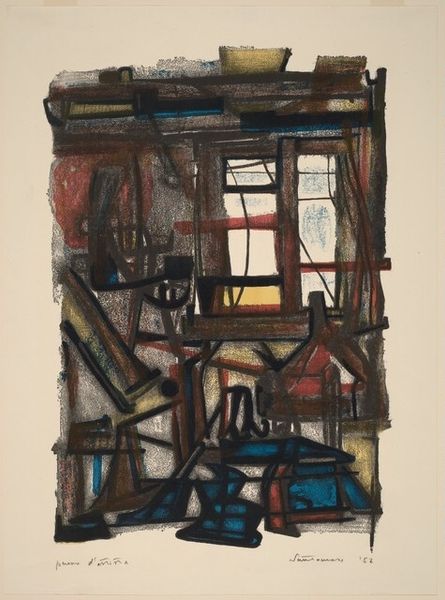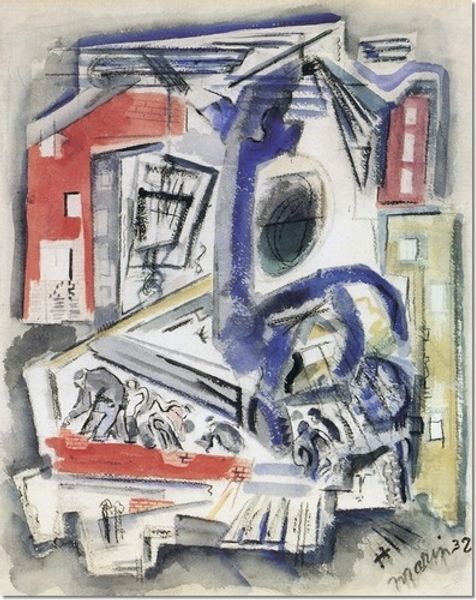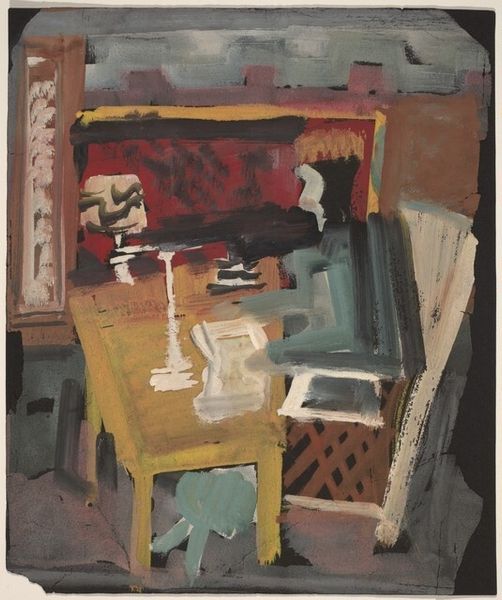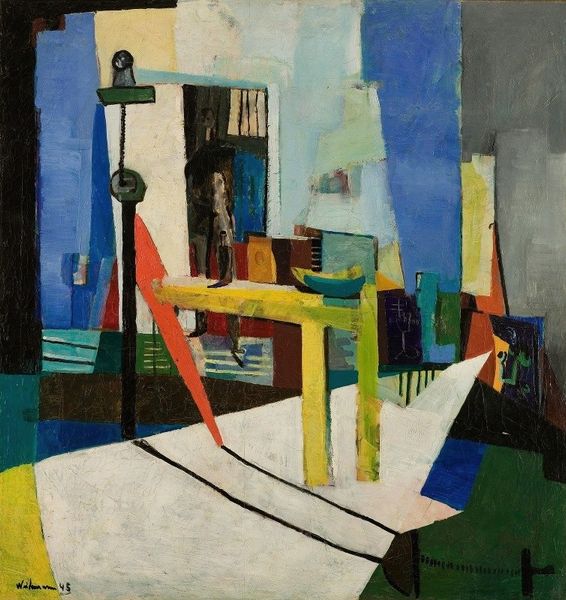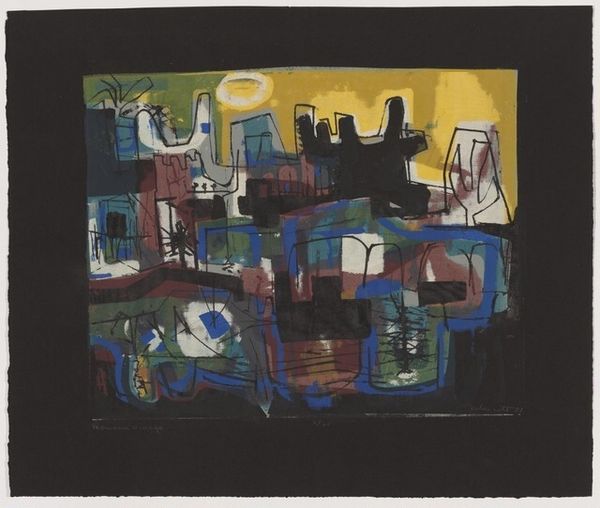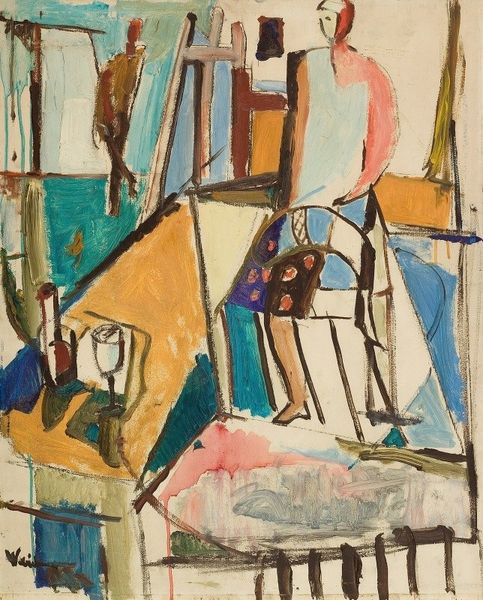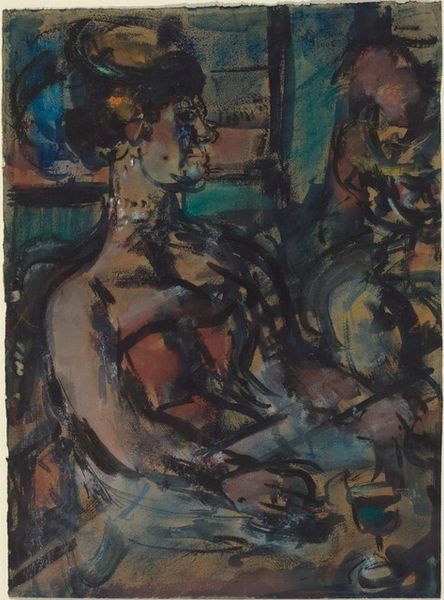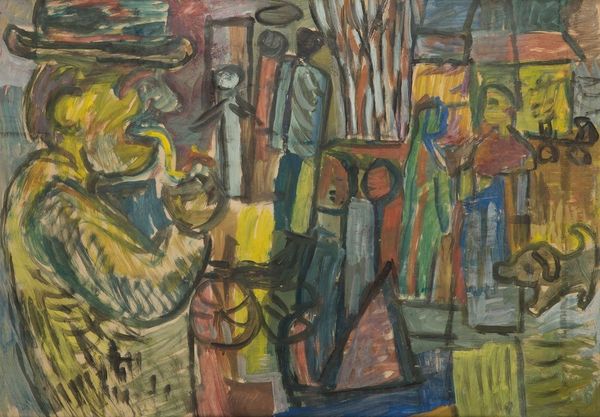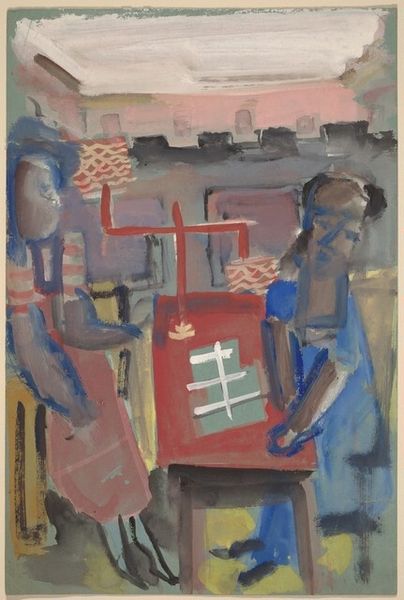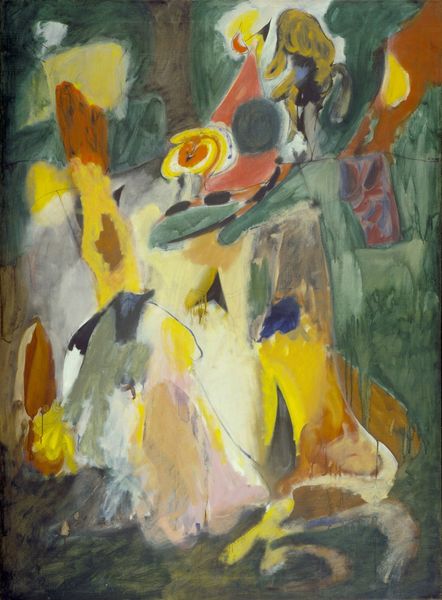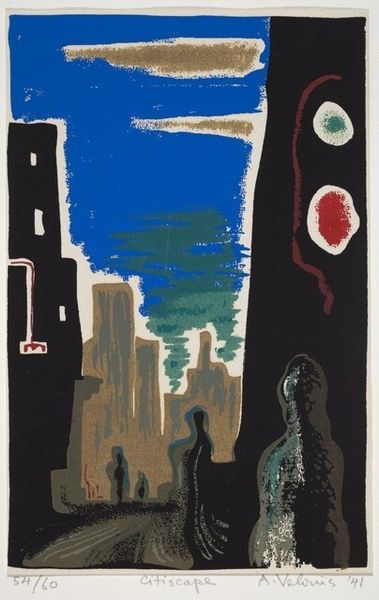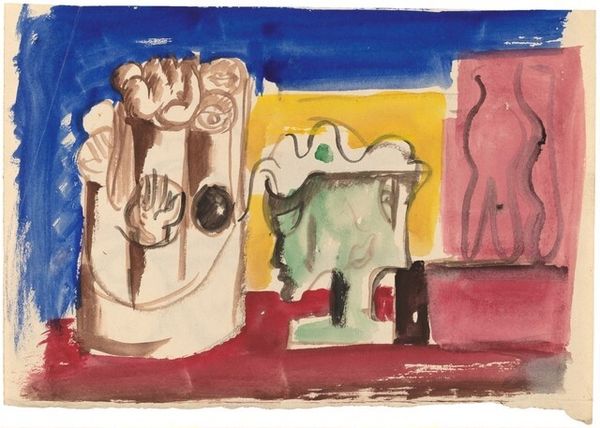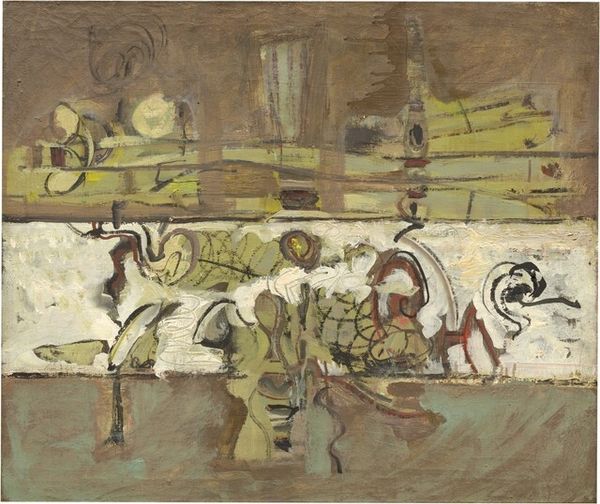
drawing, painting, watercolor
#
drawing
#
water colours
#
painting
#
figuration
#
oil painting
#
watercolor
#
abstraction
#
cityscape
Copyright: National Gallery of Art: CC0 1.0
Editor: We’re looking at "Figures Standing on a Roof Top," a watercolor and oil painting by Mark Rothko. It’s hard to pinpoint an exact date. The colours feel muted, almost melancholic, yet the architectural shapes have an imposing quality. How do you interpret this work? Curator: I see this painting as a powerful commentary on urban existence and the individual's place within it. Notice how the figures seem almost ghostly, devoid of individual identity. The rooftop becomes a stage, raising the question: What kind of performance are they enacting? Is this about precarity, being exposed on the margins? Editor: The anonymity of the figures makes me think about alienation. Curator: Exactly! Think about the historical context in which Rothko was painting. Urbanization was accelerating, bringing new possibilities but also new forms of social isolation. These figures are suspended between the personal and the collective, mirroring anxieties about belonging in a rapidly changing world. Are they participating in this world or are they rejecting it? Editor: So, the painting invites us to consider the power structures implicit in the cityscape? Curator: Absolutely. Consider how the buildings loom, dwarfing the figures. This isn't just a visual effect; it reflects real-world power imbalances and the individual's struggle against institutional forces. What societal expectations, in your opinion, were Rothko commenting on? Editor: Maybe the pressure to conform or the feeling of being insignificant in the face of vast social systems. Curator: Precisely. And the colours? They aren't vibrant and celebratory; instead, they create a sense of unease, almost as if to expose the fragility of the human condition within this constructed environment. This piece asks: How does the city shape, and perhaps deform, our sense of self? Editor: That's a perspective I hadn't fully considered. I was focused on the aesthetic, but the social commentary adds so much depth. Curator: Art often works best when it challenges us to move beyond the purely aesthetic and engage with the broader cultural and political contexts that shape our lives. It's about unveiling, challenging, and inspiring action.
Comments
No comments
Be the first to comment and join the conversation on the ultimate creative platform.
